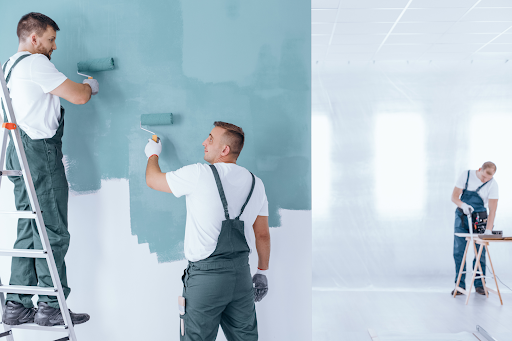6- Safety Tips for Successful Exterior House Painting
This year, you finally decided to repaint your house. Excellent idea; a fresh coat of paint is an easy and cost-effective method to boost your home’s curb appeal and give it a completely different appearance.
However, exterior house painting involves more than dipping a brush into a paint can and applying paint to the walls. Professional painters have techniques and skills they have honed over years of practice.
Follow their lead, and you can get outcomes that make it seem like you hired the experts.
Let’s discuss must-know tips for flawless exterior painting.
Choose Expert House Painters
One of the most important considerations before starting a painting project is to choose expert house painters. They will know all the ins and outs of large-scale painting projects and can enhance the overall look of your home.
Also, they will know the right season and time for painting and can give you suggestions accordingly. With their expertise, you can ensure that the painting project goes smoothly without any setbacks.
Clean and Inspect the Surface Thoroughly
To achieve professional-looking results, thoroughly clean and inspect the surface before painting. You should clean the entire surface of dirt, grime, and debris. Remove any loose or flaking paint with a scrub. Apply caulk, putty, or spackle to any holes, cracks, or other imperfections, and allow them to dry completely. Lightly sand rough spots and remove dust with a tack cloth.
Furthermore, inspect any moisture damage or water stains and make necessary repairs. Unaddressed water damage can cause the new paint to peel prematurely. Test for lead-based paint if your home was constructed before 1978. So, it is crucial to exercise proper safety measures when working with lead paint.
Test for Lead
Lead-based paint is a significant cause of lead poisoning in children and can also be hazardous to adults. If your home was built before 1978, you should use a lead-testing kit to test painted surfaces such as door jambs and window frames.
Dealing with lead paint requires specific safety measures. Avoid scraping or stripping with heat if a surface tests positive for lead. A safe method for removing strip lead-based paint is to spray the surface with water and gently scrape off the loose paint. Throw away the paint chips immediately, then use a specialized vacuum with a HEPA filter to clean the area. You should hire an expert to complete these tasks.
Practice Ladder Safety
Whenever you’re working off the ground, there’s always a risk of falling. So, it is essential to follow ladder safety procedures when using a ladder. Before climbing any ladder, make sure it is in good working condition.
Your ladder should be placed approximately one foot from the house for every three feet in height and on a solid surface. Uneven ground, stones, or gravel can cause a ladder to move abruptly. Although plastic drop cloths are excellent for catching paint spills, placing your ladder on them can create a slippery surface.
Use the Right Tools
Use a high-quality brush, roller, and airless sprayer, which can be rented from home improvement centres or tool rental outlets. Applying primer and paint to textured surfaces is easiest when done with an airless sprayer, and then back-roll it by hand with a roller to ensure adhesion.
If you have never used an airless sprayer, follow the equipment’s instructions and gain some experience by painting a less visible side of the house. Work from a 5-gallon paint bucket and use a paint strainer to prevent clogs in the sprayer.
Apply More Than One Coat of Paint
To prevent paint bleeding, use a high-quality primer for the base coat. Painters occasionally employ tinted primers to match the final color of their paint job so that two finish coats aren’t needed. In other situations, a contrasting color primer can highlight areas not fully covered by the previous finish coats.
The primer should be dried before applying the first finish coat. When that finish coat is tacky, you must apply a second topcoat.









